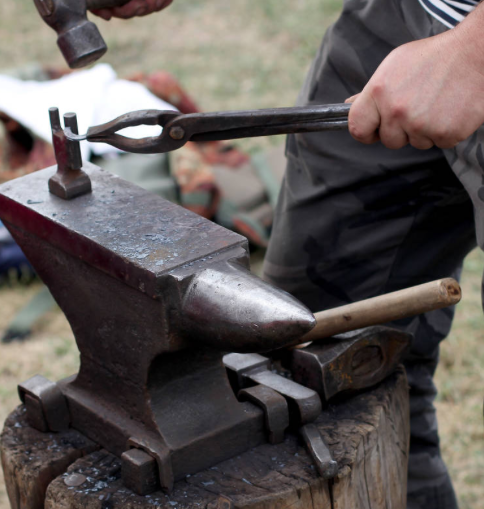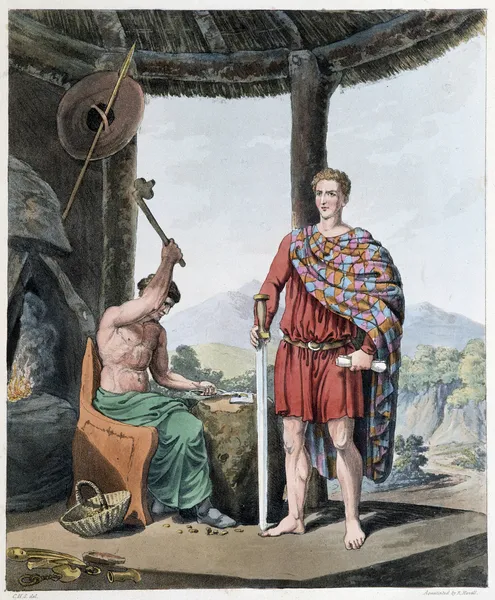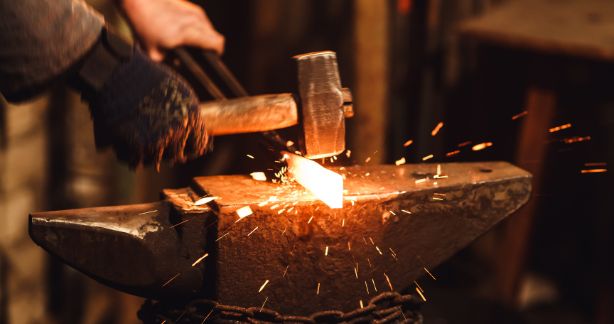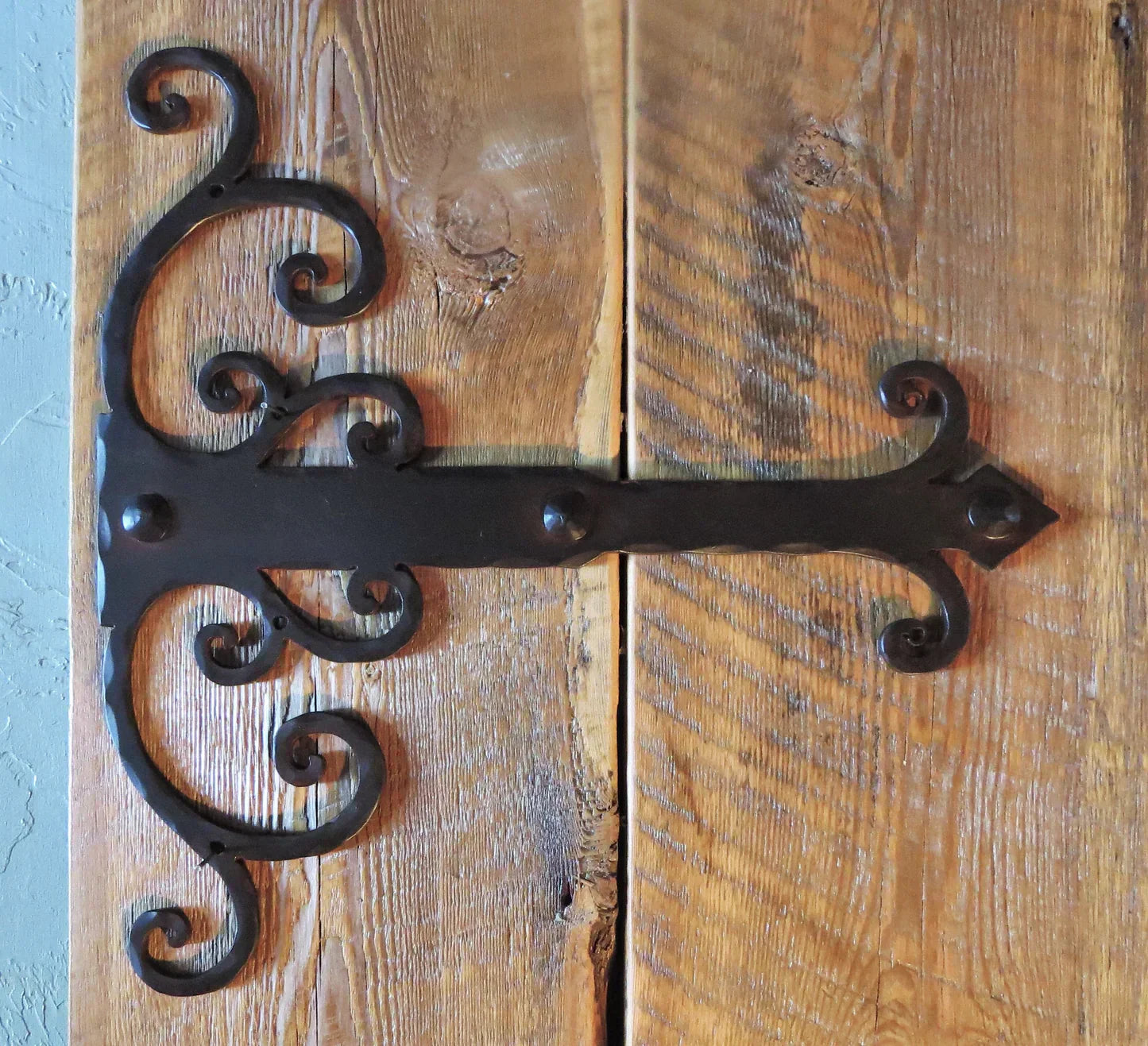
The story of blacksmithing is a testament to human ingenuity and adaptability. It’s a craft that has survived millennia—not by resisting change, but by evolving with the times. Today, blacksmithing endures as an art form, a connection to our collective past, and a way to appreciate the beauty of handcrafted work in an age often defined by mass production.
Blacksmithing may feel like a remnant of a bygone era, yet the craft is still alive and well, evolving with modern materials while retaining its deep historical roots. Today, artisans at
From its humble beginnings in ancient civilizations to its role in shaping frontier America, blacksmithing has always been a symbol of resilience, skill, and creativity. This post will take you on a fascinating tour through the history of blacksmithing, its evolution, and how artisans like us at 
What is a Blacksmith?
A blacksmith is a craftsman who works with metals, primarily iron and steel, using high heat and specialized tools to forge, bend, and shape metal into functional or decorative pieces. The term "blacksmith" comes from "black metal" (iron) and the Old English word "smythe," meaning "to strike." What began as a necessity for creating tools and weapons thousands of years ago has now transformed into an artisanal profession combining both practicality and artistic expression.

A Brief History of Blacksmithing

The Origins of Blacksmithing
The art of blacksmithing dates back to around 1500 BCE, believed to have originated in ancient Syria and practiced by the Hittites. The Hittites, ancient Anatolian peoples of Asia Minor and Syria, were pioneers in iron smelting, a skill that eventually gave rise to the Iron Age. Interestingly, early blacksmiths often worked with iron found in meteorites, referred to as "black metal" due to its natural black oxide coating.
While iron tools and weapons initially played second fiddle to bronze, their durability eventually won out, giving rise to iron's widespread use. Blacksmithing flourished as civilizations discovered iron's superior strength for tools, nails, and functional implements.

The Middle Ages and Ornate Designs
During the Middle Ages, blacksmithing moved beyond simple tools, becoming integral to home security and decoration. Ironclad doors, gates, window grilles, and railings not only provided security but also offered artisans a canvas for ornamental designs. By the 16th century, blacksmiths were crafting intricate scrolling patterns, floral motifs, and lace-like designs that added a decorative touch to architectural structures.
It was during this time that blacksmithing became a sought-after profession, requiring years of apprenticeship to master the trade. Blacksmiths were highly esteemed members of their communities.
The Old West and the Frontier Smithy
When many of us think of blacksmithing, an image of a Western blacksmith pounding horseshoes on an anvil comes to mind—and for good reason. The 1800s marked the "golden age" of American blacksmithing. Blacksmiths on the frontier contributed significantly by forging wagon parts, repairing tools, and, most famously, crafting horseshoes.
Despite the industrialization that brought mass production and reduced reliance on traditional blacksmithing practices, frontier smiths thrived. They adapted to this new demand, becoming indispensable in maintaining the transportation systems of the time, such as wagons and carriages.

Modern Blacksmithing
Today, blacksmithing may no longer be a necessity for daily survival, but it thrives as a respected and treasured art form. Roughly 5,000 to 10,000 people in the United States still practice blacksmithing, though only a small percentage do so professionally.
The Craft Revived
The 1970s saw a revival of blacksmithing, with artisans exploring it as an expressive art form. Modern blacksmiths combine traditional hand-forging techniques with advanced tools like gas-powered forges and modern anvils. The focus has shifted to creating custom, intricate works, from home decor to sculptures and everyday tools like knives and pans.
Balancing Tradition and Innovation
Despite the advent of technology, many contemporary blacksmiths continue to draw inspiration from historical designs. This melding of past and present captures the true essence of the trade. For instance, some blacksmiths use natural gas instead of charcoal for forging, creating sustainable methods without sacrificing the authenticity of the craft.
The influence of decorative blacksmithing, first introduced in the 17th century by French blacksmith Jean Tijou, is also reflected in modern creations. Architectural elements like iron railings, door knockers, and custom hardware bring an authentic charm to rustic decor, proving that blacksmithing is as relevant in style today as it was centuries ago.

Old West Iron – Honoring Tradition
At
Our goal is to ensure that the art of blacksmithing remains accessible to all. Whether it’s a rustic iron door knocker to complement a traditional home aesthetic or ironclad screws for custom projects, we are creating metalwork that lasts, inspires, and celebrates the artisanship of blacksmiths past and present.

Why Blacksmithing Matters
The story of blacksmithing is a testament to human ingenuity and adaptability. It’s a craft that has survived millennia—not by resisting change, but by evolving with the times. Today, blacksmithing endures as an art form, a connection to our collective past, and a way to appreciate the beauty of handcrafted work in an age often defined by mass production.

Add Timeless Ironwork to Your Home
Explore our collection of handcrafted iron products at
Discover the beauty of history reimagined.
